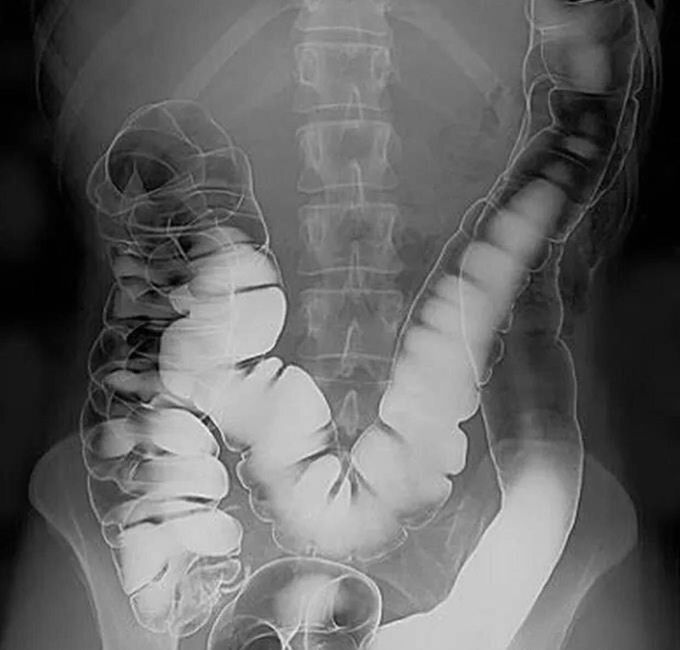


Rectal contrast
Bringing a whole new meaning to pain in the rear. Can you spot the pathology in this image? Shown here is an image of a patient who underwent rectal contrast to evaluate the large intestine. Although there are multiple types of contrast, a common agent is gastrografin. Gastrografin is water soluble, which makes it osmotically active. This means that the administration of rectal contrast will draw water into the lumen of the large bowel, making it an ideal choice to treat large bowel obstructions from constipation - a very common problem in older adults. Once contrast has been administered, an X-ray is taken, which can give various findings depending on the underlying pathology. In contrast (pun intended), Oral administration of gastrografin can help treat small bowel obstructions due to is osmotic activity as well. Alternative agents can also be chosen for rectal contrast such as sodium phosphate although sodium phosphate has been associated with higher rates of volume depletion and hypotension. Another classic use for rectal contrast is for the diagnosis of pediatric large bowel disorders such as Hirschprungs disease and meconium ileus or other causes of large bowel obstructions in adults. (Via Medicos.)

